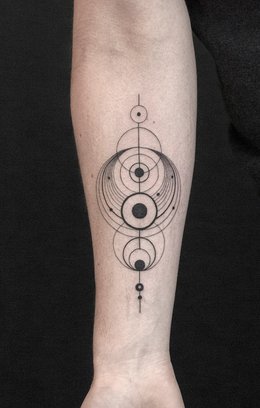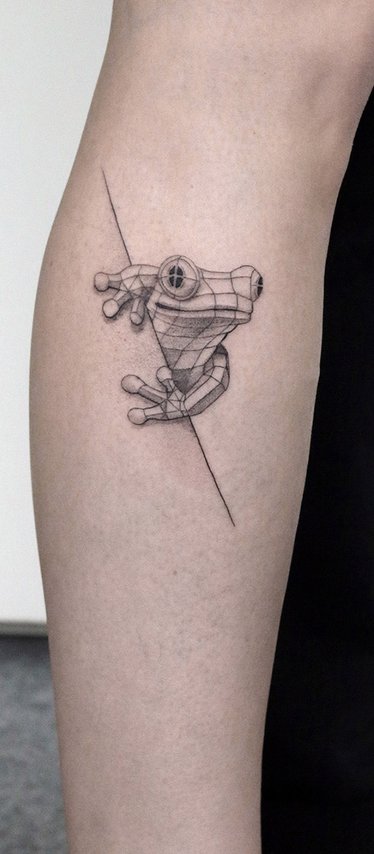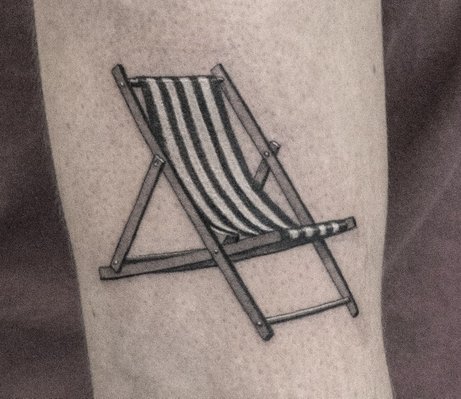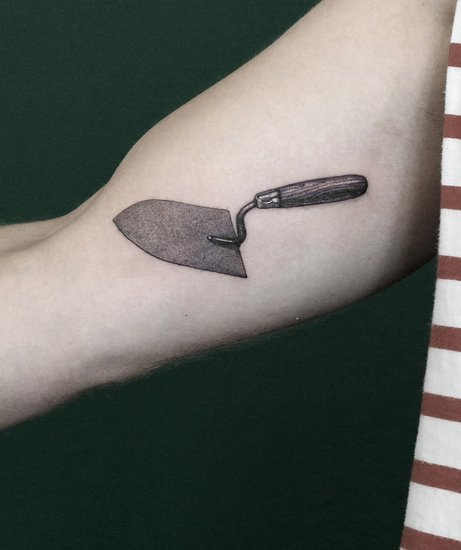By Sven Rayen.
Fine line tattooing is a style of tattooing that involves using very thin and delicate lines to create intricate and detailed designs. It is often characterized by its delicate and minimalist aesthetic, with precise linework and minimal shading. Fine line tattoos have gained significant popularity in recent years due to their elegant and subtle appearance.
But what defines a tattoo as a fineline or micro tattoo? Is it solely based on the size of the design, as the name implies? Or is it determined by the level of detail or the thickness of the lines? Is it just a passing trend or a truly enduring style of tattooing?`
In the past, and for some artists even today, tattooing has been associated with bold lines and vibrant colors. These bold lines are created using a round liner, which consists of several smaller needles soldered onto a needle bar. Tattoo artists refer to these as seven-liners, nine-liners, and so on. The round liner is placed in a grip and attached to a tattoo machine usually powered by electro-magnetic coils. On the other hand, micro tattoos are typically done using a 'single needle' technique, which involves using just one ultra-fine needle soldered onto the needle bar.


The evolution of fine line tattooing as a distinct style and it's evolution to 'micro tattoos' can be partialy attributed to advancements in tattooing equipment and techniques. In the mid-20th century, the introduction of tattoo machines with finer needles and better ink control allowed tattoo artists to create more intricate and detailed designs. This opened up new possibilities for creating delicate linework and finely detailed tattoos.
Micro Tattoos
'Micro tattooing' may seem like a contemporary trend, it cannot be discussed without acknowledging the broader context of fine line prison tattooing.
The origins of fine line prison tattoos remain unclear, as tattooing used to be an underground and illegal practice in many cultures and regions.
In the United States, according to the Department of Justice's website, there was a significant increase in prison tattoos during the 1930s. Initially, these tattoos served as a means of distinguishing between different criminal gangs and their hierarchies. Despite strict regulations against tattooing in U.S. prisons and equal disciplinary measures for both the tattoo artist and the inmate receiving the tattoo, today, in some prisons, over 90 percent of inmates have tattoos while serving their sentences.
During the 1970s in Los Angeles, when prison tattooing gained popularity, inmates did not have access to professional equipment and resorted to creating their own tattoo machines using electrical razors. Ink was sourced from pens or, as seen in Russian Gulags, even the soot of burned rubber mixed with urine.
Since they lacked the means to solder needles, they used a single sharpened guitar string to penetrate the skin and apply the ink. This resulted in finer tattoos than those created outside of prison, leading customers in tattoo shops to start requesting tattoos done in the "prison style."
Innovative artists embraced this style as their trademark, giving rise to the first generation of "fine line" tattooists.
Controversy
Ultimately, tattooing is a challenging art form. The human skin, being a living and dynamic organ, presents unique considerations. A stunning drawing on paper may not translate equally well onto the skin. Tattoo artists must adapt their techniques to different parts of the body. Achieving a perfect line on the shin requires different methods compared to tattooing an elbow. There is a delicate balance to be struck. Tattooing too deep can result in blow-outs, where the ink spreads beneath the skin, causing a bluish halo effect. On the other hand, if the needle doesn't penetrate beyond the epidermis, the tattoo will fade as dead skin cells renew.
The goldilocks zone, the dermis, is where the ink remains stable and has the best chance of lasting a lifetime. Using a thicker needle provides better tactile feedback for the artist, allowing them to locate the right spot by feeling the skin's resistance. With a single needle, there is minimal resistance, and the artist must rely on their experience.
During my research for our book, I encountered numerous websites criticizing micro tattoos. Many traditional tattooists still believe that bold lines hold up better over time, associating finer lines with a higher risk of fading. However, based on my own experience, I believe the opposite holds true. When done correctly, fine lines tend to blur less, while improperly executed bold lines can expand over time. I firmly believe that the quality of a tattoo determines its longevity, regardless of the style. If a micro tattoo exhibits sharpness and contrast, there is no reason to doubt its endurance.
The technical challenges involved make micro tattoos the most difficult to execute. Therefore, when considering a micro tattoo, thorough research becomes even more crucial. Due to their rising popularity, many artists attempt micro tattoos without adequate training and experience. Remember that a micro tattoo is intended to be permanent, but without expertise, it may fade prematurely. Seek out an artist who specializes in the style of tattoo you desire to ensure the best possible outcome.
Text and images © Sven Rayen.


For Appointements click HERE.
All Images and texts - © 2023 Sven Rayen